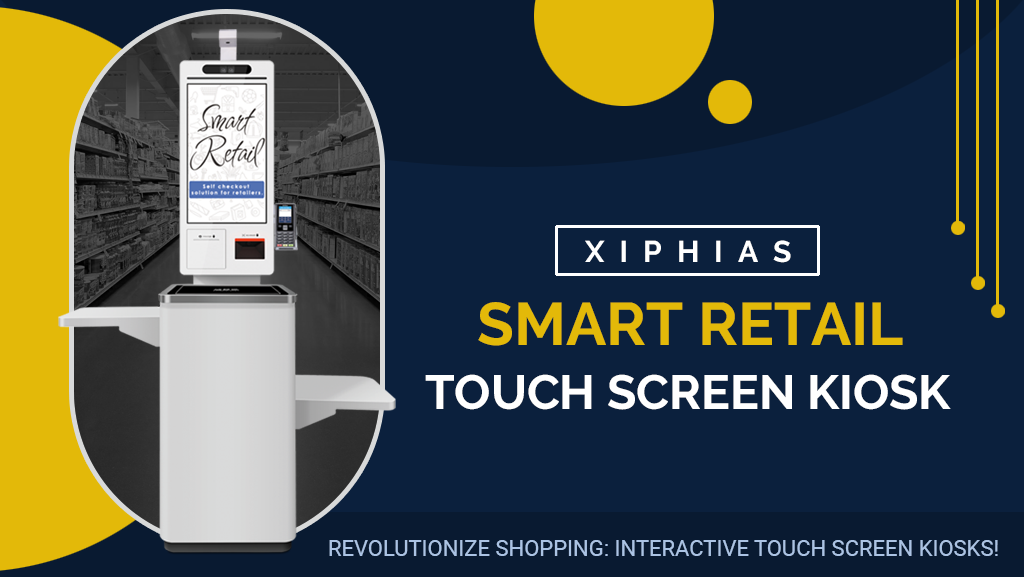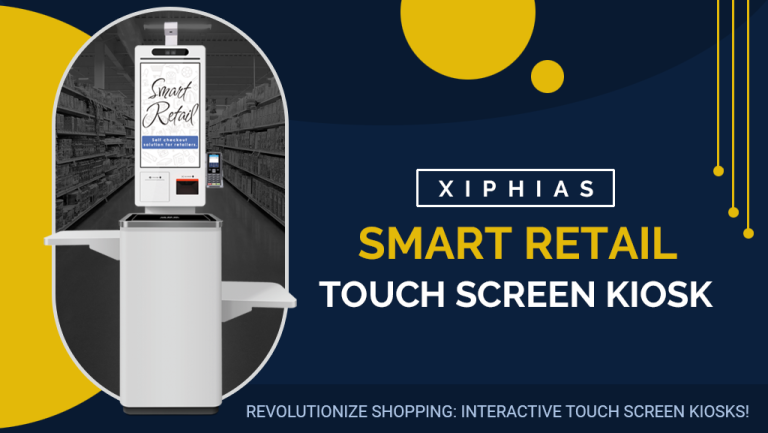Boosting Sales and Engagement: The Advantages of Implementing Touch Screen Kiosks in Retail
In today’s digital age, retail businesses are constantly seeking innovative ways to engage customers and drive sales. One technology that has proven to be a game-changer in this regard is the touch screen kiosk. By offering interactive, self-service solutions, retailers can significantly enhance customer experiences while also boosting operational efficiency. Implementing touch screen kiosks in retail settings has numerous benefits that directly impact sales, customer engagement, and overall store performance.
1. Enhanced Customer Experience
Touch screen kiosks provide customers with a seamless and enjoyable shopping experience. Shoppers can explore products, access detailed information, and even check availability without the need for staff assistance. This empowers customers, giving them more control over their shopping journey, while reducing the time spent waiting for help.
Moreover, kiosks offer intuitive and easy-to-use interfaces that guide customers through the store’s offerings. Whether it’s browsing products, locating items, or reading reviews, customers can do it all at their own pace. This personalized experience can significantly improve customer satisfaction, leading to higher engagement levels.
2. Increased Sales Through Upselling and Cross-Selling
Touch screen kiosks are highly effective tools for upselling and cross-selling products. Kiosks can recommend additional items based on customer selections, helping increase the average purchase value. For example, if a customer selects a pair of shoes, the kiosk might suggest matching accessories, such as socks or shoe care products. These recommendations appear as non-intrusive prompts, encouraging customers to consider additional purchases.
Additionally, touch screen kiosks can showcase promotions and limited-time offers, further enticing shoppers to spend more. This targeted approach leads to higher sales without requiring staff to push products, making the process feel more natural for customers.
3. Reduced Labor Costs
One of the primary benefits of implementing touch screen kiosks is the reduction in labor costs. Kiosks handle many tasks that would typically require multiple staff members, such as answering product-related questions, checking stock levels, or processing payments. By automating these tasks, retailers can optimize their staffing needs and allocate employees to other areas, such as customer support or inventory management.
This labor efficiency allows retailers to operate more cost-effectively while still providing excellent service. With kiosks handling routine inquiries and transactions, staff can focus on high-value tasks that contribute to overall store performance.
4. Faster and More Efficient Checkout Process
Touch screen kiosks streamline the checkout process by allowing customers to make purchases without waiting in line. These self-service kiosks enable customers to scan items, review their cart, and complete payments quickly. As a result, retailers can handle higher volumes of transactions, especially during peak shopping hours.
Faster checkout times lead to higher customer satisfaction, as shoppers value efficiency and convenience. Kiosks also reduce the risk of cart abandonment, which often occurs when customers are frustrated by long wait times.
5. Real-Time Inventory and Product Availability
Touch screen kiosks provide customers with real-time access to inventory and product availability information. This transparency is especially valuable in larger retail stores where customers may have trouble finding specific items. With a simple tap on the kiosk, shoppers can check if their desired product is in stock, locate it within the store, or even place an order for home delivery.
This functionality reduces frustration for customers and ensures they can quickly access the products they need. For retailers, this improved access to inventory helps reduce stockouts and missed sales opportunities, further boosting revenue.
6. Data Collection for Personalized Marketing
One of the most significant advantages of touch screen kiosks is their ability to collect valuable customer data. Every interaction with a kiosk provides insights into customer preferences, purchasing patterns, and behavior. This data can be used to create personalized marketing campaigns, enhancing the customer experience and driving repeat business.
For example, retailers can analyze which products are frequently browsed but not purchased, helping them fine-tune promotions or adjust pricing. Additionally, kiosks can be integrated with loyalty programs, offering customers tailored discounts or rewards based on their shopping history.
7. Improved Store Navigation and Product Discovery
Touch screen kiosks help customers navigate large retail stores with ease. Shoppers can use kiosks to search for products, find specific departments, or get directions to in-store promotions. This not only improves the customer experience but also encourages product discovery, as shoppers may come across items they hadn’t originally intended to buy.
By improving in-store navigation, retailers can enhance the shopping journey, making it more enjoyable and efficient. This increases the likelihood of customers spending more time in the store, which often results in higher sales.
8. Customization and Special Offers
Retailers can use touch screen kiosks to offer customers personalized experiences through customization and special offers. For example, customers could design their own products, such as custom clothing or accessories, directly through the kiosk interface. This not only engages customers but also allows retailers to offer unique services that differentiate them from competitors.
Additionally, kiosks can be used to deliver personalized promotions based on customer preferences or purchase history. Offering special discounts or loyalty rewards directly through the kiosk encourages customers to return, building long-term relationships with the brand.
9. Reduced Human Error
Traditional retail environments are prone to human error, especially during peak shopping hours when staff may be overwhelmed. These errors can result in incorrect orders, miscommunication, or pricing issues. Touch screen kiosks help reduce these mistakes by automating many of the processes that typically involve human interaction.
For example, when customers use kiosks to place orders or check prices, they can review their choices before completing the transaction, reducing the chances of mistakes. This leads to a smoother shopping experience for customers and fewer issues for staff to resolve.
10. Multilingual and Accessible Options
Touch screen kiosks can be programmed to support multiple languages, making it easier for non-native speakers to navigate the store and complete their purchases. This feature is particularly useful in areas with diverse populations, where language barriers may otherwise hinder the shopping experience.
Moreover, kiosks can be designed with accessibility in mind, offering options for visually or hearing-impaired customers. By making the shopping experience more inclusive, retailers can attract a wider range of customers and improve overall satisfaction.
11. Enhanced Security for Transactions
Touch screen kiosks provide a secure platform for processing transactions, reducing the risk of fraud or theft. Many kiosks are equipped with encrypted payment systems that protect customer data during the checkout process. Additionally, kiosks often require customers to verify their purchases before completing a transaction, ensuring accuracy and security.
For retailers, this added layer of security not only protects customers but also helps prevent loss from fraudulent activities, further improving overall profitability.
12. Adaptability and Flexibility
Touch screen kiosks offer retailers a high level of adaptability and flexibility. They can be easily updated to reflect changes in inventory, promotions, or seasonal offers. This ensures that customers always have access to the most current information, helping retailers remain agile in a competitive market.
Furthermore, kiosks can be integrated with various retail systems, such as point-of-sale platforms, inventory management, and customer relationship management tools. This seamless integration allows for a cohesive shopping experience, both in-store and online.
13. Future-Proofing Retail Operations
As technology continues to advance, touch screen kiosks will play an increasingly important role in shaping the future of retail. Retailers that adopt kiosks today are positioning themselves to meet the demands of a tech-savvy customer base. Future innovations may include voice recognition, artificial intelligence, or augmented reality features, further enhancing the shopping experience.
By investing in touch screen kiosks, retailers can stay ahead of the curve, offering customers the convenience and engagement they expect from modern retail environments.
Conclusion
Implementing touch screen kiosks in retail offers numerous advantages that directly contribute to increased sales and customer engagement. From enhancing the shopping experience and reducing labor costs to providing valuable data insights, kiosks are transforming the retail landscape. As consumer preferences continue to evolve, retailers that embrace this technology will be well-equipped to meet the challenges of the future.
Touch screen kiosks offer a solution that benefits both retailers and customers, creating a more efficient, engaging, and profitable shopping environment. By investing in this technology, retailers can stay competitive in an ever-changing market, delivering the convenience and personalized experiences that today’s shoppers demand.


